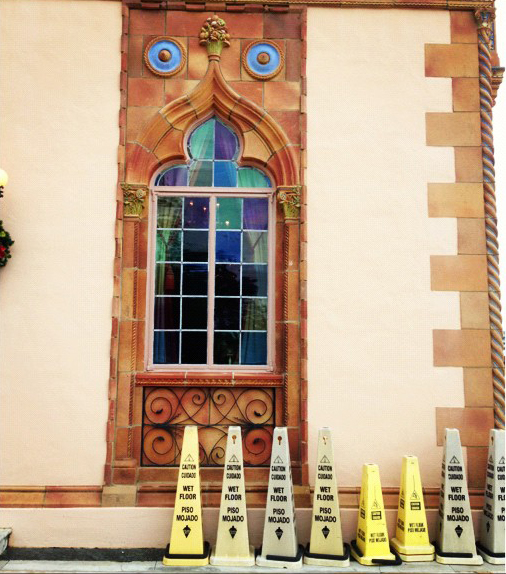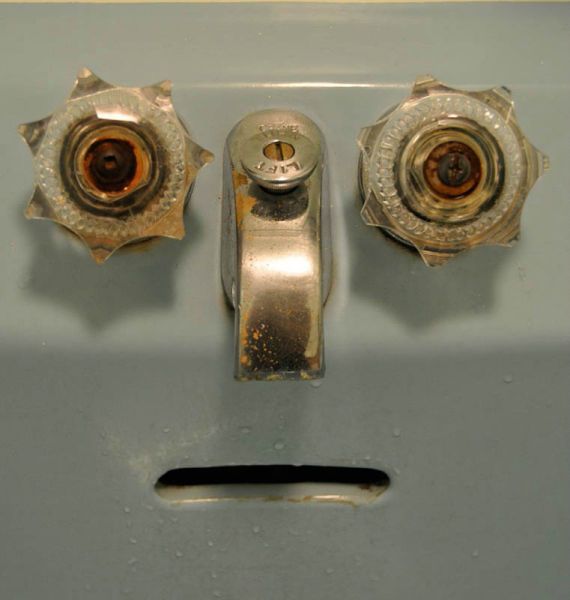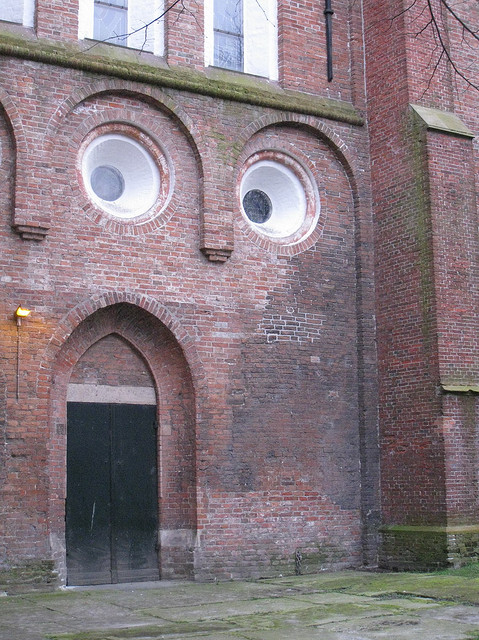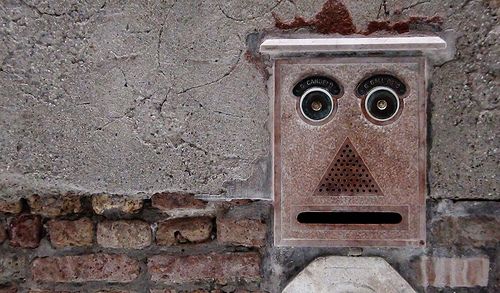Have you ever heard the word pareidolia? Even if you haven’t, I can guarantee you’ve experienced it.
Pareidolia is the term for seeing faces in inanimate objects.

Of course there are scientific studies of why we humans see faces everywhere. We may think it’s obvious when a thing looks like a human, but our brain does quite a bit of interpretation to create the faces we see everywhere.
“Although we tend to think that our eyes faithfully report whatever is in front of us, the retina records an imperfect and confusing image that needs to be tidied up by the brain.”
I’d guess it’s also culturally based as well. The series of punctuation that creates various emoticons like this 🙂 had to be learned over time. I remember trying to figure out what less than 3 meant, and that was not even 15 years ago! I imagine that in different cultures, not all pareidolia faces would register as such. Not all humans see the same thing.

“That might explain why these faces produce the same subconscious reactions we have when we look at a real person. Last year, for instance, a team of Japanese researchers found that we begin to track the gaze of the phantom faces – in just the same way that we try to follow the eyes of a person in front of us. In other words, whenever you see this perplexed building giving the side eye, you might find an urge to see what’s making him gawp.”

“There could also be deeper, evolutionary reasons for why we are especially prone to see faces. Human survival depends so heavily on others – whether we need their help, or fear their violence – that we need to react quickly and understand their motives. So the brain may be wired to quickly detect others whenever it can. If we occasionally make a mistake and see a face in tree bark, that’s less serious than failing to spot someone hiding in the bushes.”

There are a ton of examples of pareidolia on the internet, and they are so funny! I’ve been collecting some of my favorites on Pinterest (do your future self a favor and bookmark it now for when you’re having a crummy day!)

